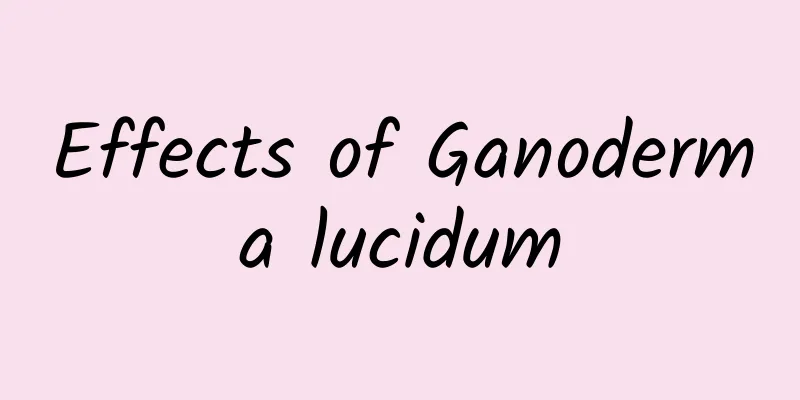The efficacy and function of Vallisneria

|
I believe many people are familiar with the Chinese medicinal herb Vallisneria paniculata. As a common Chinese medicinal herb, Vallisneria paniculata is rich in nutrients. Let us learn about it in detail below. [Other names] bitter grass, gall grass, scattered blood grass [Source] Medicinal material source: the whole herb of the Lamiaceae plant Sanguisorba officinalis. [Original form] Sanguisorba officinalis, perennial herb, 7-32cm long. Stems spreading-ascending or toothed, slender, densely grayish-white villous or woolly villous. Leaves opposite; petiole about 5mm long; leaf blade hard papery, black when dry, often reddish underneath, oblong-obovate or inverted triangular-ovate, 1.5-3cm long, 0.8-1.8cm wide, obtuse at apex, cuneate-decurrent at base, sparsely pubescent on both sides, with irregular sparse teeth on margin, ciliate. The cyme has 4-8 flowers, borne in the leaf axils; inside the pedicels; the calyx is purple, funnel-shaped, covered with long soft hairs on the outside, glabrous on the inside, with 10 veins and 5 calyx teeth; the corolla is light purple, purple-red or purple-blue, 0.8-1cm long, covered with sparse soft hairs on the outside, with a hair ring at the base of the inside, the crown rim is two-lipped, the upper lip is short and round, the lower lip is wide and elongated; there are 4 stamens, didyna; the disk is annular, and the lobes are not obvious. The nutlets are oblong-triangular, brown, with reticular wrinkles on the back and a navel on the abdomen, which occupies about 1/2 of the ventral surface. The flowering period is August to November, and the fruiting period is around October. [Habitat distribution] Ecological environment: Grown in thickets of short grass on dry and barren slopes at an altitude of 2400-2700m. [Chemical composition] The whole plant contains ajugacumbin B, ajugamacrin CE and ajugapantin A, etc. 【Nature and flavor】 Bitter; cold 【Functions and indications】 Clears away heat and detoxifies; cools blood and reduces swelling. Mainly used for chronic hepatitis; painful urination; mouth sores; sores and swelling; swelling and pain caused by falls [Usage and Dosage] For oral use: decocted in water, 3-6g. For external use: take appropriate amount, mash and apply or grind into powder and sprinkle. 【Excerpt】 Chinese Materia Medica The above is a brief introduction to mountain vallisneria. Through this we can understand that mountain vallisneria contains a variety of nutrients, which are very effective in treating and preventing some diseases. In daily life, everyone can eat it under the guidance of relevant people. |
<<: The efficacy and function of Iris montana
>>: The efficacy and function of mountain shell bone
Recommend
Do you have a small hole in front of your ear? This is a memorial left by your fish ancestors
I wonder if you have noticed that there is a pair...
The efficacy and function of dog spine
Do you know Cibotium barometz? It is a common Chi...
Dialogue with Academician Zhu Min, searching for the human ancestor 440 million years ago
Are humans' ancestors fish? Chinese Academy o...
Under the curled and yellowed leaves, a "war" is taking place
Produced by: Science Popularization China Author:...
The efficacy and function of horse stubble cream
Horse wither paste is a kind of Chinese herbal me...
Nobel Prize winner George Parisi: Flying with the starlings, doing what no one has done before
In 2021, Italian physicist Giorgio Parisi won the...
Wunderkind: UK e-commerce consumer report 2025
Wunderkind releases UK eCommerce Consumer Report ...
Scutellaria baicalensis root extract benefits
In our lives, Scutellaria baicalensis is a common...
The efficacy and function of goat blood
Goat blood is a common medicinal ingredient in tr...
Science in the hot spots of the week: my country will establish a near-Earth asteroid defense system
I wish you all a happy Labor Day. Here are the mo...
What new discoveries have been made in the scientific expedition to the Amnye Machen Glacier in Qinghai?
Recently, a research team from the Yangtze River ...
The most weight-loss-enhancing fruit in autumn, I won’t let you not know!
Autumn is here. There is a kind of fruit with gol...
The role and efficacy of wolfberry
In daily life, we often see people making tea wit...
An inch longer is an inch stronger. How can you stretch to be healthier?
There is an old saying that "an inch longer ...
Jicao 5x Cordyceps sinensis lozenges
Any kind of medicine has a good effect on disease...









